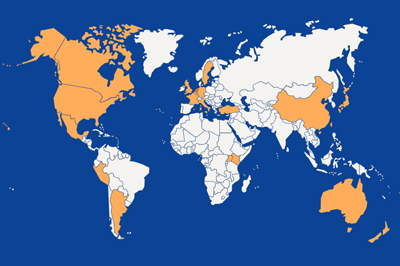To evaluate and optimize the Rock and Water program, it was decided to initiate a large-scale process evaluation examining the implementation and the level of satisfaction with the program. Digital and written questionnaires were used for the study. Both a quantitative and qualitative method of data collection was used to gain insight into this.
Between October 2017 and January 2018, questionnaires were completed by:
- Implementers: participants in the 3-day Rock and Water basic training course have written evaluations of the training immediately after completion.
- Implementers: certified Rots and Water trainers, who implement the intervention within their schools, evaluated the program and its implementation.
- Target group: students at the Sondervick College, who received Rock and Water lessons, digitally filled out an evaluation form that questioned their experiences with the lessons and its impact on their own, personal functioning.
Including these three parties in the process evaluation provides a broad overview from initial training through implementation and appreciation of the program. This paper first discusses the three research groups separately, followed by an overall conclusion.
Purpose of research
The purpose of this study is to understand the use and appreciation of the Rock and Water program by both the implementers and (part of) the target group. Depending on the results, conclusions and recommendations can be drawn from this study to further optimize the implementation of the intervention.
Research question
The purpose of this process evaluation is achieved through a number of research questions. These questions, when applicable, are addressed for both implementers and the target audience:
- What are the characteristics of the implementers and the target group?
- Were the implementers able to implement the intervention and how did they do it?
- Under what circumstances and conditions is the intervention carried out?
- What materials are used?
- Are parents/caregivers involved in the intervention and in what ways?
- Is the intervention considered safe?
- How is the intervention perceived?
- What are the experiences and impact of the intervention on the target population?
- Did the intervention contribute to the professional development of the implementers?
- What are the success and fail factors of the intervention?
Click here to view the survey.

